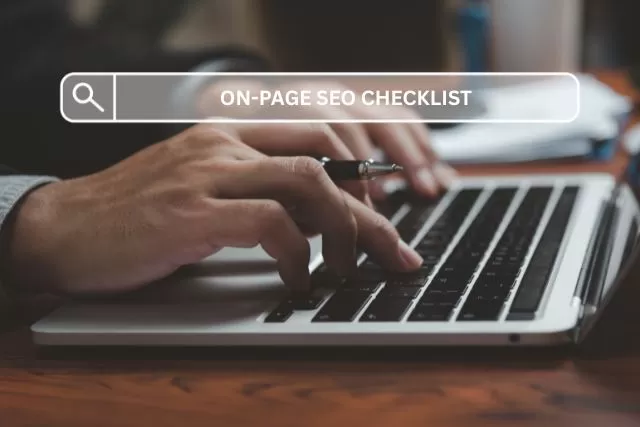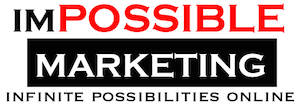On-Page SEO Checklist: Optimise Your Site With Ease in 2025
Posted on: July 4, 2025

Search engine optimisation (SEO) was created with one goal in mind: to make your site more visible and understandable to search engines. SEO makes it easier for both people and bots to find your website and determine whether your content is relevant to their search. Though there are many moving parts when it comes to SEO, it’s best to start with the ones you can directly control, also known as your on-page SEO strategy.
What is on-page SEO?
On-page SEO (also referred to as on-site SEO) involves optimising individual webpages’ content and structure, so they perform better in search engine rankings and provide users with greater value. On-page SEO entails speaking fluently in two languages at once – one that search engines can comprehend and another that appeals to your target audience. Your goal is to make your content easy for Google to index while still offering clarity, engagement, and usefulness for human readers. Envision on-page SEO as a bridge connecting two worlds:
- It translates your content into an analysis-ready format for search engine bots.
- It equips readers with useful, well-structured, and user-friendly information.
- It assists in balancing a first-rate user experience with the technical facets of SEO.
- It ensures both content quality and content discoverability go hand-in-hand.
On-page SEO is where visibility really starts, whereas technical SEO deals with the backend crawling and indexing of your website.
Does on-page SEO still matter in 2025?
Yes, absolutely. According to Google’s “How Search Works” report, the most basic indicator of relevance is whether a page includes the same terms as the user’s query. This highlights the continued importance of on-page SEO: it ensures your pages are aligned with what users are actively searching for. Search engines evaluate your keywords, content structure, and user-focused elements to determine if your page fulfils search intent.
While Google’s algorithm continues to evolve, one thing remains constant: user experience. With its increasing emphasis on “people-first content,” Google encourages creators to provide helpful, intentional content that meets real user needs. This means relevance and quality matter more than ever.
Optimising on-page SEO has the ability to rank individual pages for particular keywords. Additionally, the traffic generated by those terms is more likely to convert – that is, sign up, subscribe, or purchase – when they are properly focused. In addition to keyword use, there are additional important factors:
- Page readability and user experience
- Time on page and bounce rate
- Relevance to search intent
- Speed and responsiveness
- Click-through rate (CTR) from the SERPs
- Compatibility across mobile and desktop
On-page SEO is about positioning your content in a way that both search engines and users can recognise as useful, credible, and worth their time.
A comprehensive checklist to improve your on-page SEO
An effective on-page SEO checklist is a methodical blueprint for optimising each page component to meet search engine algorithms and provide users with real value. This framework addresses the relationship between technical accuracy, content quality, and user experience, going beyond surface-level strategies. To make sure every page on your website is optimised for both people and bots, you should focus on the following essential elements.
1. Keyword research
The foundation of any SEO strategy lies in keyword research. You must be clear on the search term or keyword theme you’re aiming for before you write or optimise a single word on your page. This foundational step guarantees that all of your content, including product pages and blog posts, is focused and effective.
Use keyword research tools such as Google Keyword Planner, Ahrefs, or Ubersuggest to find terms with a high monthly search volume and little competition. Avoid the urge to target too many keywords at once, as this might weaken your SEO signals. Instead, stick to one primary keyword or theme per page.
Keyword cannibalisation is a serious pitfall to be aware of. It occurs when several pages on your website target the same keyword or variations that are relatively similar. This can confuse search engines and result in your pages competing against each other for rankings. You can identify this by using Google search with a query like:
site:yourwebsite.com “keyword”
To fix it, make sure that each piece of content focuses on unique keywords or various aspects of the same topic. A well-planned content strategy reduces overlap and increases your chances of ranking consistently.
2. Content quality and freshness
Unique content is only the beginning. In today’s competitive digital space, your content must be genuinely valuable to stand out and earn attention.
Google describes “thin content” as low-value or automatically generated material that lacks depth – think duplicate affiliate pages or content that has been scraped. If your material doesn’t provide a thorough and clear response to the user’s query, it may still fall short of delivering value even if it’s not blatantly spammy. Therefore, make sure your content fulfills the headline’s promise and offers the information a user would want when searching for that particular keyword. In addition, valuable content is:
- Readable: Content should be organised with brief paragraphs, visual aids, and subheadings. Make it simple to read and comprehend.
- Actionable: For every “what,” there should be a “how.” Offer steps, examples, and illustrations. Including screenshots and links to more in-depth resources makes your article usable.
- In-depth: Try to write at least 1,500 words, particularly for blog posts. Detailed explanations, original insights, and recent data all contribute to higher perceived value.
- Fresh: Update your content regularly to maintain relevance. Refresh stats, replace broken links, and revise content if keyword intent evolves.
Also, consider adopting a topic cluster model since Google is leaning more towards ranking them higher on search results. This involves organising your content around central pillar pages (e.g., “What is SEO”) and supporting it with internally linked cluster pages on related subtopics. This structure not only enhances user experience but also signals authority to Google.
3. Keyword placement
Once you’ve nailed down your target keyword, placement becomes key. Natural usage throughout the body of your content is a good start, but you’ll also need to make sure your keyword appears in areas where search engines and users look first. These include:
- Title tag
- H1 header
- First 100 words of content
- Subheadings (H2s and H3s)
- Meta description
- Image alt text
- URL
Although Google doesn’t formally acknowledge that keyword repetition improves rankings, seasoned SEOs know that the right frequency is important. It’s challenging for Google to identify the focus of a page if your keyword is only mentioned once. Mentioning your keyword several times, naturally and without stuffing, helps reinforce topical relevance.
4. URLs
Your page’s URL is a minor yet meaningful ranking factor. By default, many CMS platforms auto-generate URLs from titles or assign random strings of characters. That’s why customising your URLs is a must. Best practices for URLs include:
- Including your target keyword in the URL
- Keeping it short and descriptive
- Avoiding dates or numerical elements that may become outdated
- Eliminating unnecessary filler words unless they’re part of the keyword
A clean URL hierarchy also aids crawlers and users alike. All in all, a good example of what to aim for is as follows:
- Ideal: domain.com/seo/on-page-seo-checklist
- Avoid: domain.com/blog/2024/03/seo-post-5678
These types of URLs improve clarity for both search engines and users, contributing to better click-through rates and long-term SEO value.
5. Title tags and H1 headers
There are two primary titles for every webpage: the title tag and the H1 tag. While they often match, they serve different purposes.
- Title tag: This is what appears in search engine results, browser tabs, and when your link is shared. Keep it within 60 characters and front-load your keyword to avoid truncation. Prioritise keyword placement and CTR.
- H1 tag: This is the title that appears on the page. Here, you have more freedom, but be sure to maintain keyword alignment and strike a balance between creativity and clarity.
A compelling title not only informs but persuades. Make sure it uses precise, descriptive language, clearly communicates the benefits, and establishes accurate expectations. For example, “10 Marketing Tips” is vague, but “10 Marketing Tips That Boost Conversions in 30 Days” is persuasive.
6. Meta description
The meta description is your opportunity to summarise your page’s value proposition directly on the search engine results page. Think of it as a mini ad that entices clicks. A good meta description is:
- Between 155 and 160 characters
- Benefit-driven, actionable, and direct
- Inclusive of your keyword or a close variation
It’s still worthwhile to optimise your meta description even if Google doesn’t always display it. Strong headings and body content can act as fallback snippets, and your description can improve click-through even when not used verbatim.
7. Headings
Headings structure your content and guide both users and search engines through it. Since Google reads HTML – not visual styles – proper heading tags are essential.
- H1: Reserved for the main title. Use only one per page.
- H2: Used to break content into logical sections, each addressing a subtopic
- H3: Subsections under H2s
Prioritise clarity over quantity, and ensure headings are informative enough to communicate the page’s core ideas at a glance.
8. Image optimisation
Images are powerful tools for engagement and explanation, but they must be optimised for SEO. Here’s what you should focus on:
- Use visuals that are related to and support your content (e.g., charts, screenshots).
- Include descriptive alt text with your target keyword to describe the image’s purpose for screen readers and crawlers.
- Compress photos to reduce load times while maintaining quality. Use tools to decrease file sizes without sacrificing quality, and delay offscreen images from loading until visitors scroll to boost page speed.
- Rename files with descriptive, keyword-rich names, such as, “on-page-seo-checklist-2025.png”.
If your website is image-heavy, consider using a content delivery network (CDN) to enhance delivery times and performance metrics.
9. Internal and external links
Links improve both SEO and usability. Internal links direct visitors to other relevant content within your domain and lead them further into your site, enhancing navigation and spreading link equity. External links that refer to authoritative sites increase Google’s trust in your content. Best practices include:
- Linking to related posts or product pages within your own site.
- Earning backlinks from other trusted domains.
- Citing high-authority sources with outbound links where relevant
Well-placed links improve the credibility and trustworthiness of your content, both of which influence your rankings.
10. Technical considerations
While not a full technical SEO checklist, there are a few key checks to ensure your on-page efforts aren’t hampered by hidden issues. The following technical glitches can quietly sabotage your SEO, so make sure you audit these elements on a regular basis:
- Crawlability: Check that the page is indexable and not accidentally hidden in your CMS.
- Mobile responsiveness: Ensure that all content elements, especially videos, tables, and interactive content, appear properly across all devices.
- Page speed: Test the performance of your page using tools such as Google PageSpeed Insights. Large files, unoptimised images, and superfluous scripts can all lead to poor load times.
Conclusion
On-page SEO makes your content discoverable, understandable, and valuable to both search engines and real people. Instead of chasing trends or over-fixating on algorithms, strive to generate content that satisfies user needs while reflecting the language they use to search. With that mindset, you’ll be well on your way to building pages that both rank and resonate.


